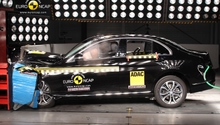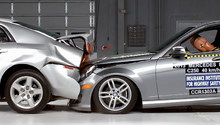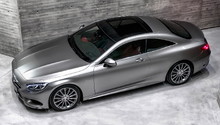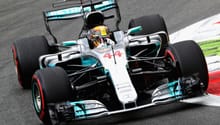Mercedes-Benz E-Class and E-Class AMG: Crash Test and Safety Ratings
Read on to learn more about crash safety ratings for the Mercedes-Benz E-Class.
This article applies to the Mercedes-Benz E-Class and E-Class AMG (2002-2009).
The Mercedes-Benz E-Class is a successful model series that delivers incredible horsepower and speed on the road. Awarded the "best pick" grade for front impact crashes, the E430 has consistently passed all aspects of vehicle safety with flying colors, affirming Mercedes-Benz long-standing commitment to producing the most highly advanced safety technology on the market. According to the North American Insurance Institute for Highway Safety (IIHS), the E430 Mercedes-Benz models demonstrate exemplary occupant safety and lead the industry in safety performance.
Safety Programs
The Insurance Institute for Highway Safety (IIHS)
The E-Class features leading safety technology that is at the cutting edge of accident research. The safety package of this successful model series includes reinforced structural members to boost front driver and passenger safety, as well as cutting-edge innovative impact elements on the wheel housings for improved occupant safety in the event of an offset collision.

The following safety ratings are provided by Cars.com and reflect results for the 2009 Mercedes-Benz E-Class (Sedan) in regards to the head restraints and seats:
Rating Type |
Rating |
| Dynamic | Good |
| Overall Rear | Good |
| Seat Head/Restraint Geometry | Good |
| Chest | Good |
| Head/Neck | Good |
| Left Leg/Foot | Good |
| Overall Front | Good |
| Restraints | Good |
| Right Leg/Foot | Good |
| Structure/safety cage | Good |
| Driver Head Protection | Good |
| Driver Head and Neck | Good |
| Driver Pelvis/Leg | Acceptable |
| Driver Torso | Marginal |
| Overall Side | Acceptable |
| Rear Passenger Head Protection | Good |
| Rear Passenger Head and Neck | Good |
| Rear Passenger Pelvis/Leg | Good |
| Rear Passenger Torso | Good |
| Structure/Safety Cage | Acceptable |
The European New Car Assessment Program
The European New Car Assessment Program gave the E-Class a 5-star rating (the best possible), citing strong design structure and a demonstrated ability to absorb force upon direct impact as being some of the reasons for the high rating. The E-Class has had ratings consistently high with EuroNCap since 2002.
National Highway Traffic Safety Administration (NHTSA)
The NHTSA awarded the E-Class an impressive 5-star rating for overall rollover, including side, front seat and side, rear seat. Overall, the E-Class was awarded the highest ratings of the system, which includes two 4-star ratings and three 5-star ratings.
| Front, Driver | 4 Stars |
| Front, Passenger | 4 Stars |
| Overall Rollover | 5 Stars |
| Side, Front Seat | 5 Stars |
| Side, Rear Seat | 5 Stars |
Common Questions
How are crash tests performed?
Crash test programs are carried out around the world. Designed to test a vehicle's ability to safeguard its occupants against a crash as well as measure a vehicle's propensity for causing damage in a two-car collision, crash test programs offer consumers a reliable way to investigate the safety of a vehicle before making a purchase. Front impact tests, moderate overlap tests and side-impact tests are examples. All tests are performed in a controlled environment and involve crash test dummies, not real people.
Are results from crash tests made public?
Yes; Crash test results are made public and can be found online or through a dealer. There is no fee to obtain the results.
Common Issues
Redesigns
While E-Class vehicles consistently receive the highest ratings across all aspects of vehicle safety, not all passenger vehicles on the market have performed equally as well. Recently, a leading automotive manufacturer responded to its poor safety rating by implementing much-needed design countermeasures to improve its small overlap results. When a redesigned vehicle comes to market, new safety tests are performed. The results of those safety tests are announced to the public.
Safety Recalls
A safety recall happens when a vehicle is found to not be in compliance with a Federal motor vehicle safety standard or a safety-related defect has been discovered. Safety recalls can be ordered by the National Highway Traffic Safety Administration (NHTSA) or the manufacturer. In either case, the defect or noncompliance issue must be reported and announced to the public.
(Related Article: Mercedes-Benz E-Class: Recalls and Technical Service Bulletins - MBWorld.org)
Related Discussions
- Crash Test - MBWorld.org
- Safety Ratings - MBWorld.org






